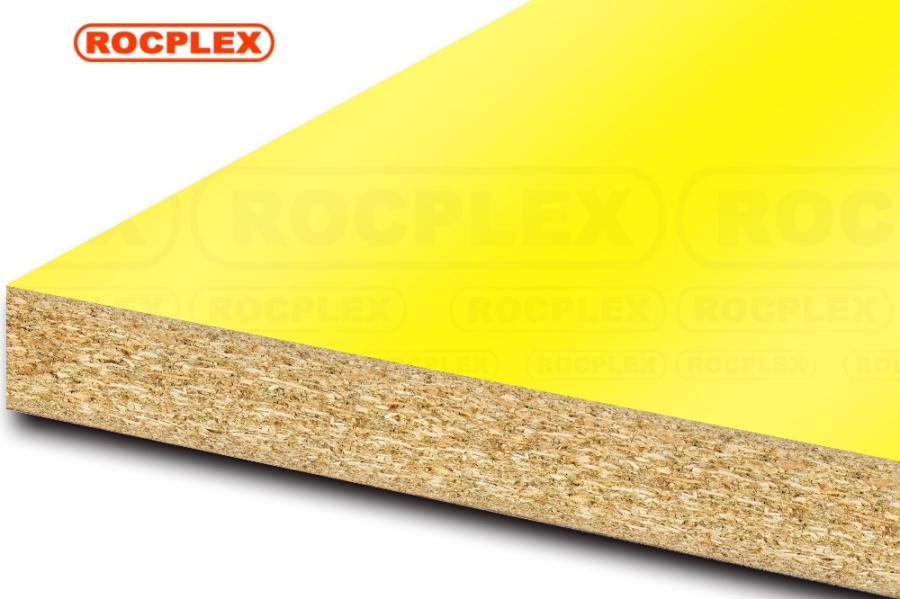Chipboard sheeting is a versatile building material widely used across various industries for its durability, cost-effectiveness, and ease of use. As the demand for sustainable and high-quality materials continues to grow, manufacturers like Xuzhou Roc International Trading Co., Ltd are at the forefront of producing chipboard sheeting that meets the evolving needs of buyers worldwide. In this blog, we will delve into the manufacturing process, industry trends, and insights related to chipboard sheeting, showcasing the advancements and innovations driving this dynamic industry.
I. The Manufacturing Process of Chipboard Sheeting:
Chipboard sheeting, also known as particle board, is primarily composed of wood particles or chips that are bound together with a resin or adhesive. Xuzhou Roc International Trading Co., Ltd employs state-of-the-art manufacturing techniques to produce chipboard sheeting that meets stringent quality control standards. The process typically involves the following steps:
1.1 Particle Preparation:
Wood particles, obtained from sustainable sources, undergo careful processing, including debarking, chipping, and grinding. These particles are sorted by size to ensure uniformity in the final product.
1.2 Blending and Drying:
The wood particles are mixed with a resin or adhesive in precise proportions to achieve the desired strength and performance characteristics. The mixture is then dried to reduce moisture content, ensuring dimensional stability and preventing warping.
1.3 Forming and Pressing:
The dried wood particle mixture is placed in a forming line, where it is spread evenly on a conveyor belt. The mixture is then pressed under high temperature and pressure, which activates the adhesive and forms a solid panel. Various sizes and thicknesses of chipboard sheeting can be produced by adjusting the pressing parameters.
1.4 Surface Finishing:
After the panels are formed, they may undergo additional treatments, such as sanding or laminating, to enhance their appearance and functionality. Surface finishes like melamine or veneers can be applied to improve aesthetics and durability.
II. Quality Control Standards and Sustainability Practices:
Manufacturers like Xuzhou Roc International Trading Co., Ltd prioritize quality control at every stage of the manufacturing process to ensure consistent product performance and customer satisfaction. These companies adhere to rigorous quality control standards, including monitoring raw material quality, controlling moisture content, and conducting thorough testing of the final product.

Furthermore, the chipboard sheeting industry recognizes the importance of sustainability. Manufacturers strive to minimize waste, optimize energy usage, and employ eco-friendly manufacturing practices. By utilizing wood from sustainable sources and incorporating recycling and waste management initiatives, chipboard sheeting manufacturers are making significant contributions to environmental preservation.
III. Innovations in Chipboard Sheeting Manufacturing:
The chipboard sheeting industry is constantly evolving, driven by the need for improved performance, sustainability, and customization options. Manufacturers are investing in research and development to introduce innovative solutions that meet the specific requirements of diverse industries. Here are a few notable advancements:
3.1 Enhanced Strength and Durability:
By experimenting with alternative adhesives and resin formulations, manufacturers are developing chipboard sheeting with increased strength and durability. These advancements ensure that the material can withstand heavy loads, resist moisture and fire, and provide long-lasting performance.
3.2 Sustainable Alternatives:
To address concerns about deforestation and promote sustainability, manufacturers are exploring alternative raw materials for chipboard sheeting production. Some examples include agricultural residue, recycled wood fibers, and non-wood fibers, which offer similar performance while reducing the reliance on traditional timber sources.
3.3 Customization and Design Options:
With advancements in technology, manufacturers can now offer a wide range of customization and design options for chipboard sheeting. This includes textured surfaces, patterned finishes, and specialized coatings that enhance the material’s aesthetic appeal and application versatility.
Ⅳ. Chipboard Sheeting: Melamine Faced Chipboard 2440*1220*17mm
4.1 Durable, Versatile, and Aesthetically Pleasing
The Melamine Faced Chipboard 2440122017mm offers a combination of durability, versatility, and aesthetic appeal. With its ample surface area and generous dimensions of 2440*1220mm (8′ x 4′), this chipboard provides plenty of room for various applications. Its 17mm thickness ensures exceptional structural integrity, making it suitable for both residential and commercial projects.
One of the standout features of this chipboard sheeting is its wide range of color and pattern options. Whether you’re aiming for a sleek and modern look or a warm and rustic feel, you can choose from a plethora of designs to match your desired aesthetic. This versatility allows you to create visually stunning environments that truly reflect your personal style and design preferences.
4.2 Easy Maintenance and Long-Lasting Durability
Keeping your furniture or interior elements looking fresh and vibrant is a breeze with the Melamine Faced Chipboard. Its smooth surface is easy to clean and requires only a damp cloth and mild detergent to remove any dirt or stains. This chipboard is resistant to scratches and stains, ensuring that your creations maintain their original charm even with daily use.
4.3 Craftsmanship and Customization
Crafted with precision and attention to detail, this chipboard sheeting can be effortlessly cut and shaped to fit your specific design requirements. It can be easily transformed into functional and visually appealing pieces such as cabinetry, shelving, countertops, and more. Let your creativity flow as you explore the endless possibilities this chipboard offers.
4.4 Lightweight and Easy to Install
In addition to its aesthetic and functional benefits, the Melamine Faced Chipboard is lightweight, making it easy to handle during installation or DIY projects. Its durability ensures longevity, allowing your creations to withstand the test of time without compromising on quality.
4.5 Melamine Chipboard: An Environmentally Friendly Choice
Melamine faced chipboard is a popular choice for furniture manufacturers and interior designers not only for its versatility but also for its eco-friendly nature. This chipboard utilizes recycled wood waste, reducing the environmental impact. However, it is important to note that while particleboard itself is environmentally friendly, melamine veneer is a synthetic material and cannot be recycled.
Conclusion:
Chipboard sheeting continues to be a popular choice for various industries due to its affordability, versatility, and eco-friendly nature. Manufacturers like Xuzhou Locke International Trade Co., Ltd. employ advanced manufacturing techniques and sustainable practices. At the forefront of the production of high-quality particleboard. As the industry evolves, we can expect further innovations to enhance the performance and aesthetics of particleboard. Meet the diverse needs of global buyers.
Post time: 7 月-18-2023

